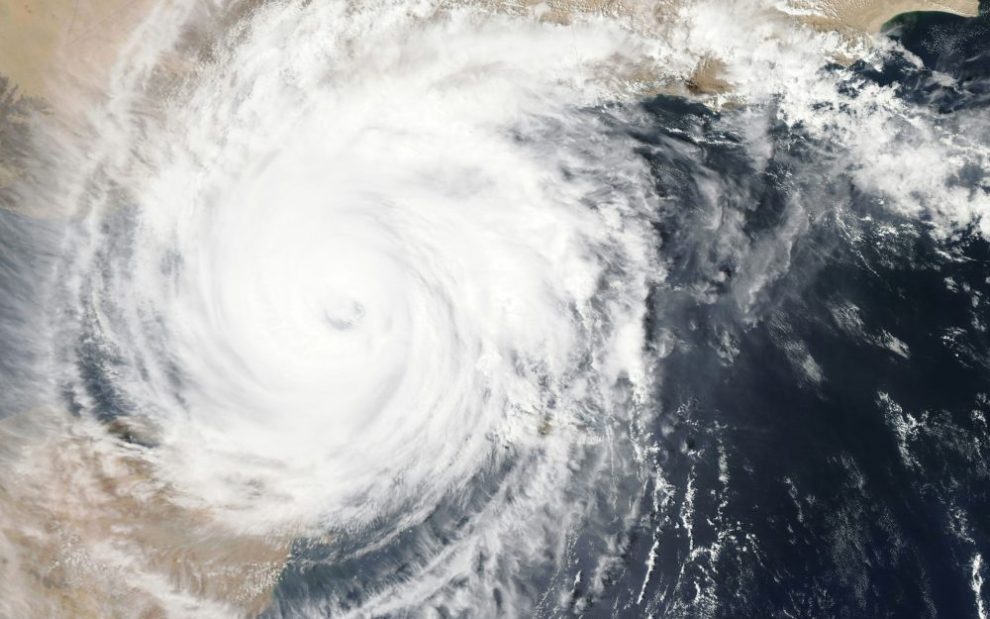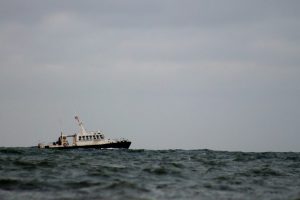A few months ago, during the readings for the 12th Sunday of Ordinary Time, we encountered a gospel story in which Jesus pacifies a raging storm (Mark 4:35–41). Also a few months ago, we entered the Atlantic hurricane season, an occurrence which spans June 1 to November 30 every calendar year. This year the National Oceanic and Atmospheric Administration (NOAA) expected an above-normal Atlantic hurricane season for 2024, and it seems its predictions are, unfortunately, spot-on. Our church isn’t immune to this threat of hurricanes and, more so, anthropogenic climate change.
You might remember, many news cycles ago, the devastation wrought by Hurricane Beryl, the earliest category 5 hurricane ever recorded for an Atlantic hurricane season. Beryl was found to be a category 5 hurricane on July 1, 2024, breaking the record set by hurricane Emily on July 16, 2005. While the Caribbean, Central America, and North America are no strangers to the dangers of hurricane season, it was anything but normal to experience such a violent storm that early in the season.
After ravaging islands in the Caribbean like Petit Martinique and Union Island, Beryl tore through the Yucatan Peninsula in Mexico, all of which are popular tourist destinations for U.S. travelers. Beryl then left Mexico as a tropical storm and went on to make U.S. landfall, though not before unusually warm waters over the Gulf of Mexico reinvigorated the storm to a category 1 hurricane. The reenergized hurricane pushed powerful winds, dangerous storm surges, and flash floods, which left millions without power in Texas amid deadly daily temperatures. As of September 2024, additional hurricanes made U.S. landfall in Florida and Louisiana.
Every natural disaster aggressively changes lives forever. Communities are left to mourn the losses of invaluable members and economic upheaval. This type of suffering is a condition that people near and around the Gulf, and people all the way up the East Coast, continue to bear painfully. Who could forget storms like Katrina (August 2005), Sandy (October 2012), Harvey (August 2017), Irma (September 2017), Maria (September 2017), and Ian (September 2022)?
As to why these natural events occur, who can truly say? From an ecological perspective, it seems to be a part of the Earth’s natural evolutionary development. However, it’s unfortunate that humanity suffers side effects in the process. Anyone who has been through a hurricane can viscerally remember the anxiety, the distress, and the disorientation that these disasters manifest. From empty shelves in every grocery store, to our televisions and smart devices seemingly unable to broadcast any other news (far less good news), to the immense clean up and restarting of life that follows, the suffering experienced in the weeks (and sometimes months) surrounding a storm can be debilitating.
Even our God is no stranger to suffering, as we see demonstrated throughout scripture, especially through Jesus’ passion. At the same time, as Christians we know that the cross isn’t the end of Christ’s story, and storms aren’t the end of hurricane victims’ story. In both scenarios, a spirit of hope emerges, and resurrection follows.
I believe this spirit can be identified as the Holy Spirit, the source of our faith, hope, and charity. This spirit is the Spirit of Christ who constantly moves to calm the effects of the figurative storms that fill the vacuum shortly after the literal storms have passed. This spirit is the Spirit that moves our church, the Body of Christ, to put faith into action.
Faith in action is a moving beyond a theoretical acceptance of doctrine to embodying Christian values in our everyday experience. Catholic social teaching, sometimes referred to as our church’s “best kept secret,” requires that our faith to be put into action.
Faith in action looks like the creativity that people channel into fundraising and aid initiatives whenever natural disasters occur. Faith in action looks like organizations who plan year-round and are ready to coordinate, package, and distribute supplies to help those in need. Faith in action looks like people praying for the best while preparing for the worst, praying through the storm, and expressing gratitude that things didn’t turn out even worse than they did.
Faith in action also looks like advocating for ecological justice and environmental activism. At this point in history, though some may try, it’s unconscionable to argue that natural disasters such as hurricanes, wildfires, major floods, and the like, aren’t exacerbated by anthropogenic climate change. For decades, scientific communities have been the prophetic voices for environmental justice and, thankfully, our church joins the effort. While I find it personally challenging to be optimistic that humanity won’t go pass the “point of no return,” I do find myself hopeful that our church, people of the resurrection, can be a saving grace as humanity navigates this larger storm called climate change.
In anticipation of hurricane Beryl, Bajan Prime Minister and climate advocate, Mia Mottley, called for unity and solidarity among people, urging them to put aside any personal grievances and to seek reconciliation with one another so that the storm didn’t prevail against the power of community. In her Netflix special, The Call to Courage, Brené Brown put forward that “in the absence of love, belonging, and connection, there’s always suffering.” In her book, If God Is for Us (Anselm Academic), Sister of St. Joseph Gloria Schaab describes God as “intimate and enduring relation.” Holding these three ideas in creative tension, along with the truth we find in Christ’s calming the storm, I’d like to put forward that when our communities stick together and become loving places of faith in action, then even when experiencing raging storms, we will embody God’s presence, that spirit of hope and resilience, so that no amount of suffering can ever get the better of us.
Community and solidarity are fundamental in our church’s preparing for natural disasters. Social justice, humanitarian and ecological, requires us to expand our understanding of who is our neighbor as we face the climate crisis as a church and global community. As to what faith looks like when it’s put into action for you, besides some of the examples I would’ve mentioned earlier, I encourage you to prayerfully discern, individually and communally, what that might look like in your life.
In the meantime, we would do well to put faith into action and, in addition to prayer, give aid to any environmental or humanitarian causes that we can. We would also do well to observe the effects of anthropogenic climate change and allow these findings to conscientize us. Once we put our faith into action, we can trust God to do God’s saving work. Regardless of what disaster looks like, we know that in, with and through us, God will get up and quiet down the storm.
Image: Unsplash/NASA













Add comment